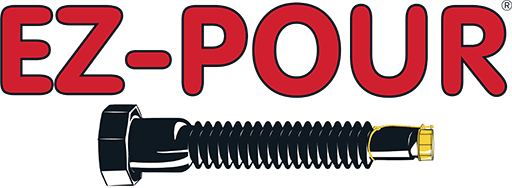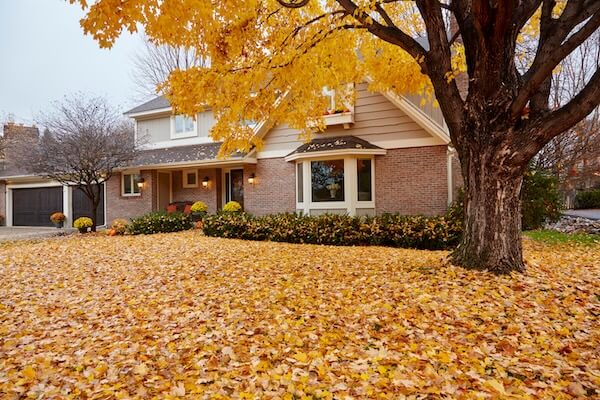As summer fades and the crisp air of fall settles in, lawns quickly become covered in a blanket of colorful leaves. A few scattered leaves can add charm to your yard, but when they pile up, your lawn’s health is at risk. Proper leaf management keeps your grass strong and puts fallen leaves to good use in the garden.
What Happens if You Leave Leaves on Grass
It’s natural for leaves to fall this time of year, and a light scattering of leaves isn’t a problem. However, when you can no longer see the grass, it’s time to act because when leaves accumulate and break down, they can damage your turf. Grass, like all plants, needs sunlight, water, and oxygen to grow and stay healthy. A dense pile of leaves smothers the grass underneath and traps moisture, and the lack of air circulation can lead to lawn diseases.
How to Remove Leaves
Consistent leaf removal is key.
- Mulching leaves with a lawn mower is one way to maintain airflow and sunlight exposure. Any lawn mower will do. You’d adjust the height of the mower, remove the bag attachment, and mow over the grass and leaves, letting the shredded bits remain on the lawn.
- Using a leaf blower is also effective. One technique is to blow leaves directly onto a large tarp placed in the middle of the yard. Once the tarp is full, simply gather its corners and tie them together.
- Raking leaves is another method. Avoid raking aggressively, as this can pull up healthy or newly established grass.
How to Use Leaves in Your Garden
Those fallen leaves don’t have to go to waste. They can be used in your garden as compost or mulch.
A compost pile needs a mixture of (brown) carbon or carbohydrate-rich materials and (green) materials that are rich in nitrogen or protein. Fall leaves, pine needles, twigs, and paper are examples of brown materials you can place in your compost. Green materials include grass clippings, produce scraps, tea bags, and coffee grounds.
Fallen leaves work well as natural mulch. Make sure it’s spread evenly, without touching the plant’s stems or leaves. Apply a 2 to 3 inch layer around vegetable plants and annuals, and a 3 to 6 inch layer around perennials, shrubs, and trees. A thicker layer of mulch can be used between rows in a vegetable garden to minimize weeds and maintain moisture.
Keep Your Lawns Looking Pristine
Are you on the search for the perfect gas can spout to fill up your lawn mower or leaf blower? Look no further; EZ-POUR® can get your old gas can working again! We offer four different spout kits to suit your specific needs, and order online to have them delivered right to your door. They’re simple to use, and if you ever need help, our knowledgeable team is more than happy to assist.

